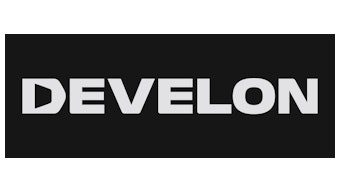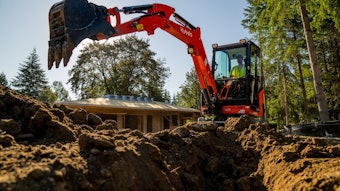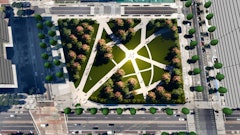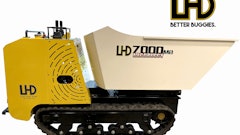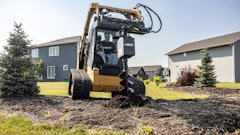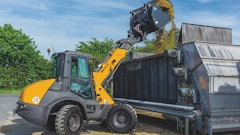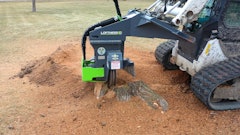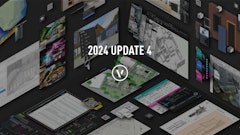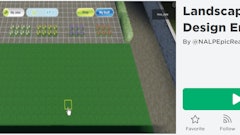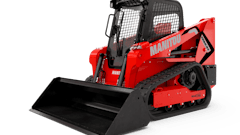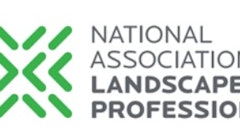
The demand for outdoor living products remains high, meaning contractors are booked months (or even years) in advance. With multiple projects lined up to complete in 2022 and beyond, it’s critical contractors and crews stay up to date on design trends and product and equipment updates to keep themselves on track.
The traditional outlook on outdoor spaces — prioritizing a weekend dinner party or place to enjoy drinks during warm months — is a thing of the past. Today, outdoor living is part of daily life, and these spaces are used for a variety of functions and activities. Knowing this, there are some key design concepts and products to consider when working on outdoor living plans as peak season approaches.
 The industry is seeing a huge shift in outdoor design to incorporate more mixed materials. Hardscapes and landscapes are blending in what is known as entangled or biophilic design.Belgard
The industry is seeing a huge shift in outdoor design to incorporate more mixed materials. Hardscapes and landscapes are blending in what is known as entangled or biophilic design.Belgard
Mixed Materials: Blending landscapes, hardscapes
Historically, outdoor design has remained relatively traditional — straight edges, borders and defined transitions that separate the space from the surrounding elements. However, the industry is seeing a huge shift in outdoor design to incorporate more mixed materials. Hardscapes and landscapes are blending in what is known as entangled or biophilic design. This style uses true natural elements or materials that mimic nature to create a more organic look and feel. It also lends itself to increasing the connection to nature, which is proven to have physical and mental health benefits.
Entangled design comes to life through many different design options and techniques. A few common methods can be used to achieve this modern, natural style with hardscapes.
- Fading: Likely the most common, the fading technique allows hardscapes to blend into turf or grass. This creates an effect that appears as if vegetation has “broken” into these surfaces, which can help soften the space and achieve a very pleasing natural aesthetic.
- Outcropping: Burying large stone boulders or outcroppings into the landscaping provides an intriguing visual effect, making both the hardscapes and landscape appear as if they are woven around these features. This technique also can incorporate vertical features like walls, fire pits and fireplaces.
- Formal inset: While this can be considered a standard design, it still creates a beautiful effect. Formal insets, curved or angular, in the paved surface, maintain a classic look but still allow for the inclusion of natural elements like trees, plants or even a water feature.
- Stepping Stone: The stepping stone technique is becoming more and more popular, especially around pool designs. Pavers are set in a stepping stone pattern and integrated with real grass or turf. Many customers are now opting for turf to decrease maintenance.
In addition to these practices, new products and textures are becoming increasingly popular to enhance biophilic design and offer more visual interest to a project. Natural wood and stone in patios, decks and other outdoor elements help these features blend into entangled design, creating a modern yet timeless aesthetic. Overall deck designs have shifted away from typical square or rectangular shapes to include curved decks that have a more organic flow. Using composite decking, contractors can create a variety of curved designs – from curved edges to circular decks and even intricate shapes outside the realm of traditional decking.
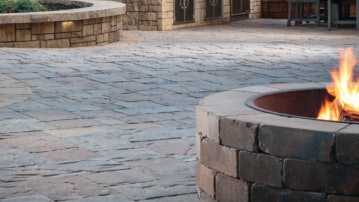 Fire pits, fireplaces, fire bowls and fire tables combine functionality and beauty, serving as a heat source and focal point in outdoor design.Belgard
Fire pits, fireplaces, fire bowls and fire tables combine functionality and beauty, serving as a heat source and focal point in outdoor design.Belgard
Tech, Fire, Water
Functionality in outdoor living design can’t be stressed enough in today’s market. Customers want to use their outdoor spaces to get a change of scenery during the workday and relax and unwind after hours. There’s no doubt outdoor kitchens, dining rooms and other spaces will still be used to host guests, but the main goal now is to create an environment that can be used any day and any time of the year.
Technology like lighting, sound, electricity and Wi-Fi access are now relatively standard in customer expectations. They want multiple electrical outlets and Wi-Fi, so they can easily work from home, as well as lighting and sound, so they can do various activities outdoors no matter the time of day. Heating and cooling elements are also important to consider when making a space usable year-round.
In addition, fire and water features are now high on the customer’s wish list. Fire pits, fireplaces, fire bowls and fire tables combine functionality and beauty, serving as a heat source and focal point in outdoor design. Water features also come in an array of options, from more traditional fountain styles to copper and stone water bowls, which can be integrated with fire features and planters. Furthermore, the combination and opposition of fire and water features is a beautiful complement to biophilic design.
 Belgard
Belgard
Creating Cohesive Designs
As contractors head into their busier seasons, the shift in how customers think about outdoor living today should be top of mind. With the rise in entangled design and the need for increased functionality, it’s more important than ever for designers, contractors and their teams to look at the “big picture” of their projects and ensure designs are as cohesive as possible.
Learn more about the techniques that can be used to integrate entangled designs and think through all the functional elements needed at the start of a project – as it’s going to be easier to implement lighting, sound and other features in the initial stages of a project. Stay up to date on new products being introduced and take advantage of tools, like augmented reality (AR) and 3D design solutions that will help better showcase design plans and make the customer happy.




